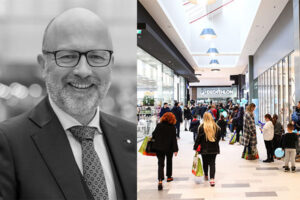BY DAVID HARPER
Some cannot get past issues around store sizes, rents, and business rates and others don’t quite match product or price to a European audience, while the few that get it right the first time develop a huge following. All of them face very different challenges to the US market. Many of them start their European journey in London.
Through regular discussions with US retailers, we find they look at Europe and consider it to be similar to the USA, i.e. a “United States of Europe.” How Brexit will affect that strategy is yet to be seen. We often find on first visits that they have not considered history, let alone language, legal jurisdiction, geography, and the way we shop. The UK’s common language will probably mean it remains the first port of call, especially as London is a global city.
One of the biggest shocks most face is the size of stores on offer. The US is a land of open spaces and retailers are able easily to secure large stores at relatively good-value rents. When they come to Europe, they are faced with historic cities where large floor spaces are not available. Recent arrivals such as Eataly and Equinox would ideally like 5,000 sq m on one floor. That size of floor plate is a rarity even in London, with perhaps only a dozen or so buildings that fit the bill.
The second shock is rent. While New York is phenomenally expensive, a number of other cities are good value compared to Europe. Our rents, particularly when you add local taxes e.g. business rates, can be very expensive, while smaller stores mean that American retailers need to sweat their stores to make enough sales to generate profit. Some are also concerned about different lease laws throughout Europe, language and currency barriers, the unknown impact of Brexit, awkward store layouts, and limited storefronts. Many are more comfortable with mall or outlet stores than with our high streets.
Sometimes American retailers get it totally wrong. For example, Eddie Bauer came and went offering their wholesome outdoor shopping experience. While the clothing product was good, no one wants to buy a canoe in central Bath.
There is a tendency for retailers to convert their sale price in Europe from dollars to pounds and then directly into Euros, so that merchandise is often 20% to 30% more expensive in Europe. This is easy to see due to the worldwide web. Thus when our European travelers visit New York, the busy shops are still Abercrombie and Fitch, Victoria’s Secret, Nike etc. The great success of brands like Hollister in Europe is well known by American retailers. When a number of staff move from company to company and well-publicized turnover figures are debated, eyes turn to Europe for expansion. We often see the same people we have dealt with from one retailer popping up in another.
Despite the challenges, however, once their home market is saturated, US retailers need to establish a beachhead in Europe to ensure continued company growth. While our culture and identity are different, the impact of media has meant that most of our children know the names of leading brands before we do and there is a pull from across the pond. We therefore can’t see any reason why the American retail model will not continue to excite European shoppers and offer variation and excitement in our streets and retail parks.
What is your opinion on this topic? Discuss it with us! Send your opinion to opinion@across-magazine.com






